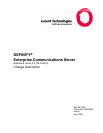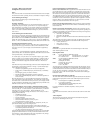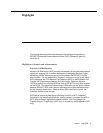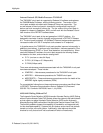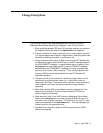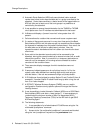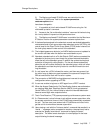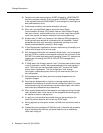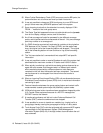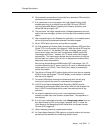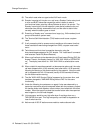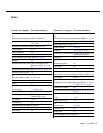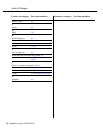
Change Descriptions
Issue 1 July 2000 7
3) The Maximum allowed IP SoftPhones was controlled via the
“Maximum IP SoftPhones” field on the system-parameters
customer-options form.
have been changed to:
1) It is possible to list all administered IP SoftPhones using the “list
multimedia ip-station” command.
2) Access to the “list multimedia ip-stations” command is blocked using
the “mm-ip-stations” keyword on the permissions form.
3) The Maximum allowed IP SoftPhones is controlled via the “Maximum
IP Stations” field on the system-parameters customer-options form.
20. If the board/port assigned to the attendant console was busied/released by
maintenance and a trunk group was under attendant control (ACTGA), the
control lamp for the Direct Trunk Group Select (DTGS) button cleared, but
the trunk group was still under control of the attendant.
21. The bridged appearance button(s) on AWOH stations were not updated to
the current call state when the station was associated to a port.
22. Attendant extended calls to a Do Not Disturb (DND) station connected the
attendant to the busy tone, even though the system was administered to
direct the call to the attendant group; in addition the system blocked post
activation of the priority calling feature. For the call scenario described
above the call will now be directed to the attendant group, which will allow
the attendant to aciviate the priority button to override the restriction and
ring the station.
23. If a call came into a VDN, followed the vector, and then was queued, but
the caller hung up before an agent answered, the queue call lamps of the
BRI set continued to flash with no calls in queue.
24. The conversion of AAR/ARS routing tables was incorrect for some
configurations when upgrading to R7/R8.
25. A user was unable to login as an ACD agent from a DECT handset.
26. When the Answer Detection by Call Classification feature was activated on
an outgoing Wide Area Telephone Service (WATS) trunk type personal
Central Office (CO) line, the call failed to reach the intended destination
because some digits were outpulsed twice.
27. Touch-Tone Receiver (TTR) queue processing could cause a system reset.
28. If a Telecommuter’s voice link was a trunk without answer supervision, after
the answer supervision time out, the IP SoftPhone automatically answered
the call. The user must now answer both IP SoftPhone and voice link to
get the call for trunks without answer supervision.
29. Users tracing a call with the "list-trace-sta/tac" command that resulted in a
“denial ...” message (caller connected to reorder or intercept tone) had to
execute the "display-event-denial" command to display the event
description. The denial event description is now displayed in the trace
output following the denial message.



